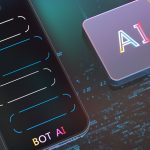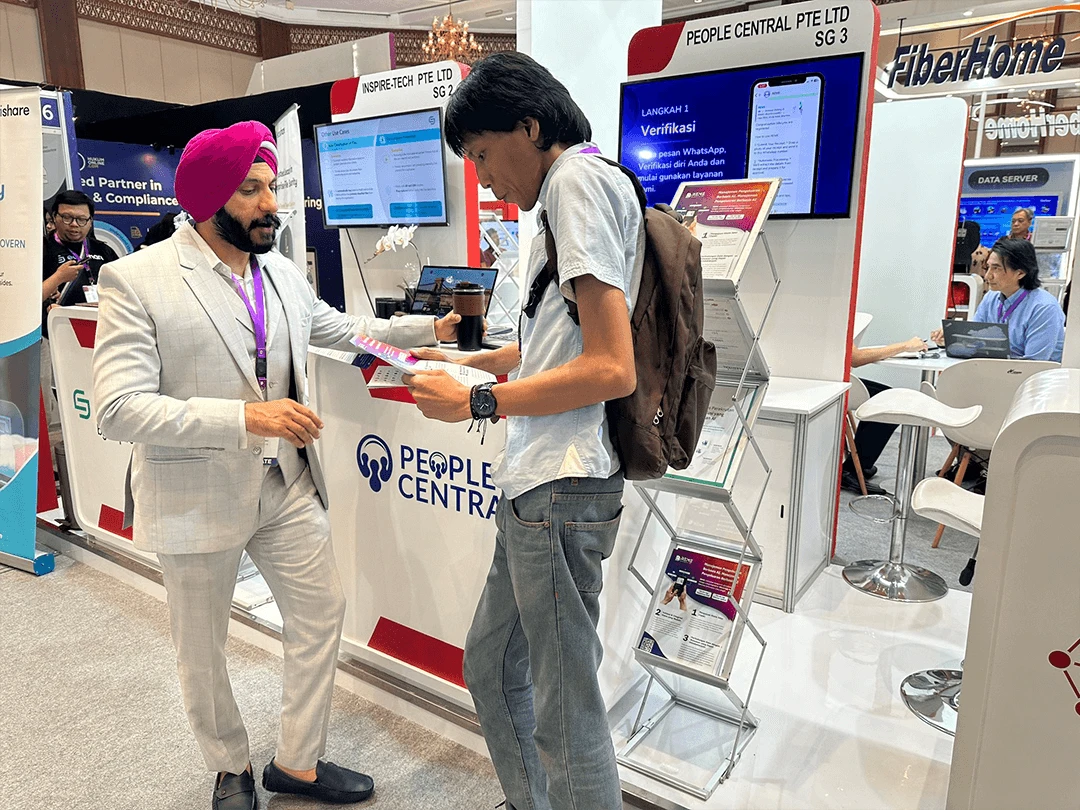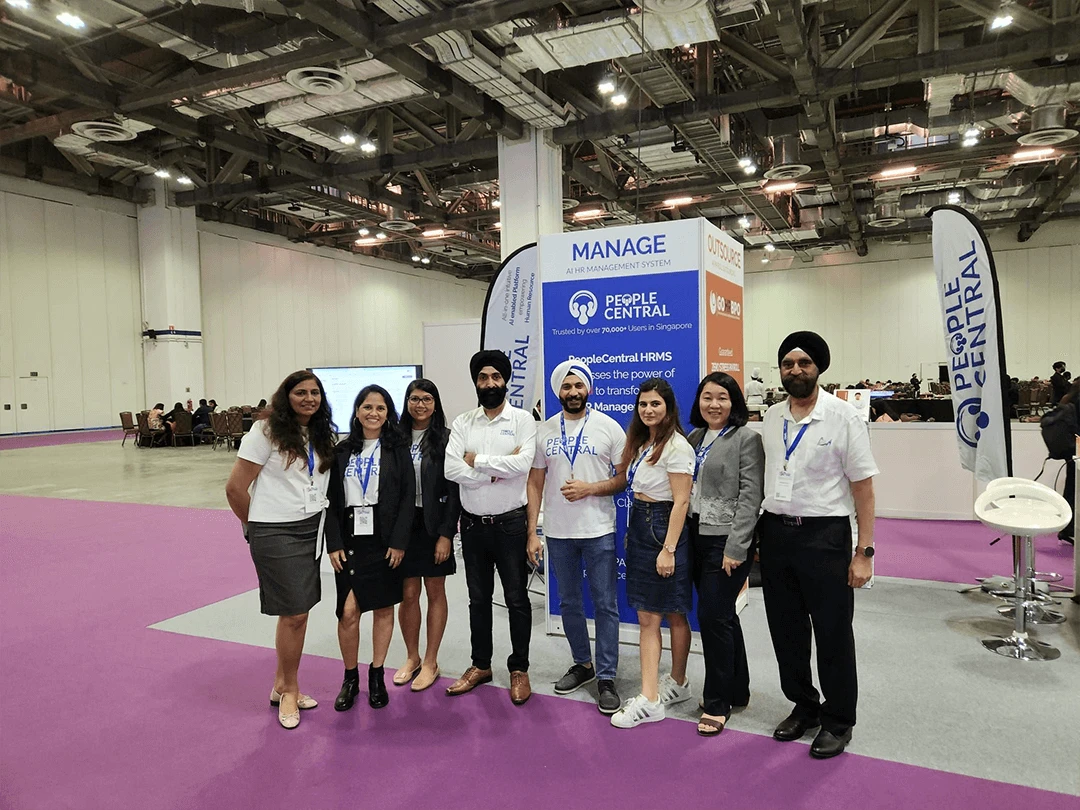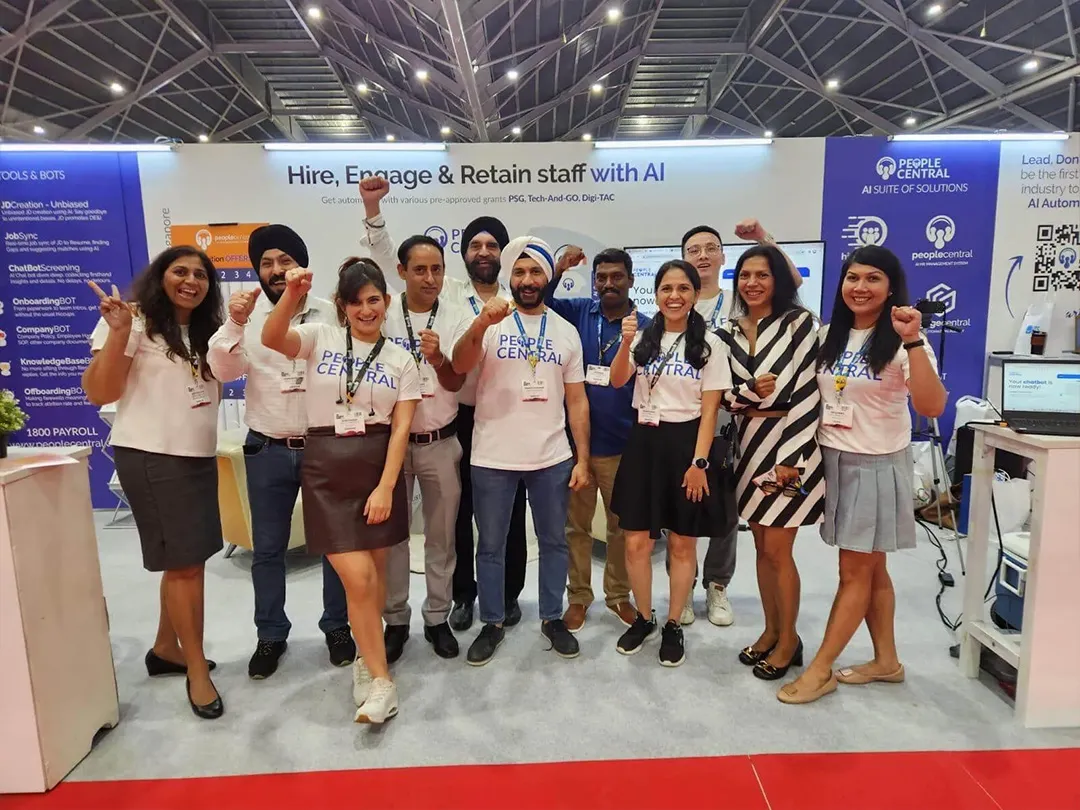Artificial Intelligence (AI) is transforming Human Resource Management Systems (HRMS), including employee retention. AI-based solutions let businesses enhance their HRMS and boost employee satisfaction, engagement, and loyalty. With AI in HRMS, companies can analyze data to spot patterns and trends linked to employee retention – and use the info to devise strategies to retain talent and reduce staff turnover.
AI algorithms are crucial for predicting how likely employees are to leave an organization. The algorithms examine job satisfaction, performance data, career progression prospects, and employee feedback to detect possible staff attrition risks. Armed with this intel, HR managers can act swiftly to reduce those risks and maintain employee retention.
Selecting the right AI solution for HRMS is critical for success. Organizations must consider flexibility of AI algorithms, scalability of the solution, integration capabilities with existing tech, and ease of use for HR pros. They need to choose a solution that meets their organization’s needs and goals.
Measuring AI’s effectiveness in employee retention is key to assessing its impact on organizational success. Key metrics like retention rates, employee satisfaction scores, productivity levels, and performance indicators can show how effective AI-powered solutions are in HRMS.
According to Deloitte’s study on AI in HR management systems, organizations that use AI have 37% lower turnover rates than those that don’t use AI. This illustrates the great benefits businesses can get from implementing AI in their HRMS processes.
As technology advances, future AI-driven employee retention trends are likely to grow even more. Predictive analytics powered by machine learning algorithms will be better at identifying indicators for attrition risk. Also, recommendations for retaining employees based on individual preferences and career aspirations will become more common. This will help businesses create a positive work atmosphere, increase employee job satisfaction, and boost overall employee retention rates.
Understanding the Benefits of AI-Powered Employee Retention in HRMS
To maximize employee retention with AI in HRMS, explore its role in employee retention and uncover the potential benefits it brings. Discover how AI can seamlessly integrate into your HRMS and enhance employee satisfaction and engagement. Uncover the advantages AI algorithms offer in identifying key factors affecting retention. Choose the best AI practices for your HRMS and measure AI effectiveness. Stay ahead of future AI trends in employee retention.
Exploring the Role of AI in Employee Retention
AI has become a player in employee retention. Its analytical abilities give insights into employee behaviour and preferences. AI can process large amounts of data to spot factors that lead to turnover and act to prevent it.
AI does more than just analyze data. It helps increase employee engagement and satisfaction. With AI-powered HRMS systems, organizations can customize learning and development programs for individual needs. This improves job satisfaction and increases loyalty.
AI-powered chatbots have changed the way organizations communicate with employees. These virtual assistants offer round-the-clock support, quickly responding to queries and concerns. Automated tasks allow HR teams to focus on more strategic initiatives that help with employee retention.
IBM’s Watson Talent Management Solution is an example of AI’s effectiveness in employee retention. It uses machine learning algorithms to predict who might leave and offers personalized suggestions. This proactive approach reduced IBM’s voluntary attrition by 10%, resulting in cost savings and improved productivity.
AI in HRMS: where the only thing getting fired is your skepticism.
Highlighting the Potential Benefits of AI in HRMS
Say goodbye to exit interviews, because with AI-powered HRMS, employee retention is now a reality! It offers myriad benefits, such as:
- Streamlining admin tasks.
- Enhancing decision-making capabilities.
- Analyzing resumes and screening candidates.
- Monitoring employee sentiment.
- Predicting potential issues.
- Suggesting targeted training programs.
- Objective performance evaluation.
- Data-driven decision-making processes.
These perks have proven to be a game-changer for businesses. A multinational corporation implemented AI in its HRMS platform, resulting in improved employee retention rates and increased job satisfaction.
So, why wait? AI is continuously evolving and its potential benefits are growing. Get ready to welcome a never-ending supply of tuna for your staff!
Implementing AI Features in HRMS for Enhanced Employee Retention
To enhance employee retention in HRMS, implement AI features. Discuss different AI features for HRMS and learn steps to implement AI in HRMS. With AI retention benefits and AI algorithms for retention, choosing AI for HRMS becomes crucial. Measure AI effectiveness and explore best AI practices, along with future AI trends in retention.
Steps to Implement AI in HRMS
To use AI in HRMS, here’s what to do:
| Set Goals: | Make clear what you want to achieve with AI. Find out where AI can help improve HR processes. |
| Check Data: | See what kind and how much data is needed for AI algorithms. Ensure data security and compliance while getting relevant information. |
| Get the Right AI Tools: | Investigate and pick AI tools that fit your HRMS needs. Think about ease of integration, scalability, and accuracy. |
| Try it Out: | Start with a small-scale test to check how AI features work with your HRMS system. Estimate its effect on employee retention and satisfaction. |
Additionally, bring in natural language processing (NLP) to increase worker involvement and customize HR experiences.
Pro Tip: Keep up with changing workforce dynamics and evolving HR trends by regularly updating AI algorithms. Using AI algorithms in HRMS for employee retention is like having a personal relationship counselor for your workforce, without the awkward therapy sessions.
AI Algorithms for Employee Retention in HRMS
To optimize employee retention in your HRMS, turn to AI algorithms. Benefit from the AI retention benefits, utilizing AI for employee retention, and leveraging AI features in your HRMS. Gain actionable insights by understanding the overview of AI algorithms for retention. Ensure success by choosing the right AI algorithms for your HRMS.
Overview of AI Algorithms for Retention
AI algorithms for employee retention are a must in today’s competitive biz landscape. These algorithms use complex techniques to analyze & predict employee behavior, empowering HR departments to come up with proactive measures to retain talented staff.
The AI algorithms use ML to boost HRMS capabilities. They can also quickly analyze massive amounts of data, helping HR pros make better decisions regarding employee retention.
The algos have some valuable suggestions for improvement:
1. Enhance Employee Engagement: Recommendation algo can detect individual preferences & suggest tailored interventions to increase engagement.
2. Address Potential Issues: Sentiment analysis identifies negative trends or issues among employees, allowing HR pros to address them ASAP.
3. Proactive Talent Management: Predictive algos can spot high-potential individuals at risk of leaving the org. With this insight, proactive steps can be taken (e.g. career dev opportunities or incentives).
These suggestions not only enhance employee satisfaction, but also significantly reduce turnover rates.
In conclusion, AI algos are powerful tools that equip HR departments with actionable insights into employee behavior & enable them to take proactive measures for retention. By using these technologies wisely, organizations can create a positive work environment that promotes employee satisfaction & reduces attrition rates.
Choosing the Right AI Algorithms for HRMS
Choosing the right AI algorithms for HRMS requires careful thought on various factors such as data availability, system compatibility, and desired outcomes. Leverage AI to improve employee retention and enhance overall HR management.
Each algorithm has unique advantages, depending on what an organization needs. For instance, decision trees give easy interpretation, while random forests are great for handling huge datasets. Naive Bayes is good for quick training, SVM offers effective classification, and ANNs recognize complex patterns.
There are other AI algorithms too. Selecting the right ones that match organizational goals while considering factors like computational resources and model interpretability is key.
As tech changes quickly, organizations must stay updated by incorporating AI into their HRMS strategies. This ensures improved employee retention, enhances decision-making, and reduces manual workload burden.
Take advantage of AI in HRMS now to be more efficient and foster a more engaged workforce. Revolutionize HRM practices and gain a competitive edge in today’s business landscape. Measure the effectiveness of AI in employee retention – because robots don’t take coffee breaks or stress about TPS reports.
Measuring the Effectiveness of AI in Employee Retention
To measure the effectiveness of AI in employee retention, leverage methods and metrics that assess its impact. Evaluate how AI enhances employee retention by analyzing its influence on various factors. Explore the sub-sections: “Methods and Metrics to Measure AI Effectiveness” and “Evaluating the Impact of AI on Employee Retention” for practical solutions in gauging AI’s success in retaining valuable talent.
Methods and Metrics to Measure AI Effectiveness
Analyzing the impact of AI on employee retention requires a few techniques and metrics. To measure this, compare turnover rate before and after AI implementation. Additionally, use AI tools to assess employee sentiment via natural language processing and sentiment analysis.
Productivity can also be evaluated by analyzing KPIs, such as output volume or sales figures. Surveys amongst employees can provide feedback on their perception of AI, and tracking the utilization rate of AI platforms can reveal how effective they are. But does AI remember to order coffee for the break room?
Evaluating the Impact of AI on Employee Retention
To assess the impact of AI on employee retention, there are several factors to take into account. One approach is to look at the pros and cons in a table format, like this:
| Factors | Benefits | Challenges |
|---|---|---|
| Training and Development | Personalized learning programs | High costs |
| Performance Evaluation | Fair assessments | Privacy and bias worries |
| Work-Life Balance | More leisure time | Job losses possible |
| Employee Engagement | Continuous feedback | Uncomfortable monitoring |
It’s also important to note that AI tech is constantly changing. Companies must be ready to adapt their strategies.
To sum up, when considering AI for HRMS and employee retention, it’s wise to weigh up the advantages and disadvantages. By understanding them, organizations can decide if AI is the right fit for their retention strategies. It’s important to remember that AI is not about replacing humans, but finding a way for them to work together.
Best Practices for Implementing AI in HRMS for Employee Retention
To optimize employee retention using AI in HRMS, implement best practices by focusing on key considerations and providing guidelines for successful integration. Identify the crucial factors for AI implementation and ensure they align with your organizational goals. Follow our guidelines to seamlessly integrate AI into your HRMS system, maximizing its effectiveness.
Identifying Key Considerations for AI Implementation
AI implementation in HRMS is becoming increasingly popular. It’s essential to identify key factors for successful integration. Organizations can improve their employee retention strategies and maximize AI benefits.
Let’s explore a table of key considerations:
| Data Quality | Ensure data accuracy and reliability. |
|---|---|
| Ethical Use | Address ethical concerns and ensure fairness. |
| User Interface | Design an intuitive interface for employees and AI systems. |
| Privacy Protection | Implement measures to protect employee data and comply with regulations. |
| Scalability | Assess the scalability of the AI solution for future growth. |
| Change Management | Use strategies to facilitate adoption and reduce resistance. |
| Integration with Existing Systems | Integrate AI into existing HRMS systems. |
There’s more to consider when implementing AI in HRMS. Identify suitable data sources, review and update AI models, involve employees in decision-making, and monitor system performance.
Don’t miss out on the AI opportunity. Embrace it and empower your workforce. AI is not an option; it’s the future of talent management.
Providing Guidelines for Successful AI Integration
Diving into AI for HRMS employee retention? Follow these guidelines for a successful integration.
Data Analysis: Accurately analyze employee data to identify attrition factors & make data-driven decisions.
Personalization: Leverage AI to personalize experiences & engagement levels for better employee retention.
Predictive Analytics: Utilize predictive analytics models powered by AI to spot potential attrition risks.
Automation: Automate repetitive tasks such as interview scheduling, onboarding & data entry.
Further Suggestions:
| Seamless Integration | Ethical Considerations | Continuous Learning & Improvement |
|---|---|---|
| Integrate existing HR systems with AI technologies to avoid duplication & ensure data consistency. | Establish ethical guidelines when leveraging AI algorithms in HRMS for transparency & fairness. | Regularly evaluate AI integration & adapt strategies to improve employee retention. |
Follow these guidelines and suggestions to harness AI in HRMS for successful employee retention. AI enables HR professionals to optimize strategies & create an environment conducive to employee satisfaction and long-term retention.
Future Trends in AI-Powered Employee Retention in HRMS
To explore the future trends in AI-powered employee retention in HRMS, dive into emerging AI trends in HRMS and predict the future of AI in employee retention. Discover the potential benefits of AI retention, implementing AI features in HRMS, using AI algorithms for retention, measuring AI effectiveness, and best AI practices in HRMS.
Exploring Emerging AI Trends in HRMS
Artificial Intelligence (AI) is transforming Human Resource Management Systems (HRMS). AI allows HRMS to automate tasks, improve decision-making, and enhance worker engagement and retention. Let’s look at the upcoming trends in AI for HRMS.
| Trend | Description |
|---|---|
| Intelligent Recruitment | AI-powered programs can assess applications, filter resumes, and pick out top candidates at record speed. |
| Personalized Employee Experience | AI can personalize onboarding, training, and career growth plans for staff members. |
| Predictive Analytics | HRMS tools can forecast employee turnover rates using historical data and machine learning algorithms. |
| Chatbot Assistants | Intelligent chatbots can provide info on policies, answer employee queries, and assist with HR tasks quickly. |
| Performance Evaluation | AI-supported systems can measure employee performance based on feedback and objective criteria. |
Plus, AI in HRMS can be used for sentiment analysis to gauge employee satisfaction and sentiment towards the company’s culture. This data assists organizations to recognize potential areas for improvement.
Surprising Fact: A report by IBM Watson Talent Insights shows that organizations who use AI for talent management have seen a 17% boost in productivity compared to those who don’t use AI technology. No job security? Don’t panic, AI will predict if you’ll quit your next job too!
Predicting the Future of AI in Employee Retention
Technology is advancing quickly and AI in employee retention looks promising. AI-powered HRMS systems can examine large amounts of data and make accurate forecasts. This helps employers learn what motivates their team and identify improvement opportunities.
For example, predictive analysis can help address problems before they become big. Personalized bots can give employees individual support, and real-time alerts remind employers of any changes that might affect retention.
AI can also help create a good company culture. It can detect negative sentiment through natural language processing to help organizations be more collaborative and transparent.
Embracing AI in employee retention has huge advantages. Companies who don’t risk losing out on growth and success. AI-powered HRMS systems can help understand and meet the needs of the workforce. It can create a productive and engaged workforce.
Don’t miss out on the opportunity to transform your organization! AI in employee retention can unlock the potential of your team – but it won’t save you from the awkward office holiday party!
Are you struggling with employee retention?
Experience integrated employee management solutions designed to enhance employee engagement and reduce turnover.
- AI-driven insights for proactive retention strategies
- Real-time employee feedback and sentiment analysis
- Personalized development plans for skill enhancement
- Performance analytics to identify high-risk employees
- Streamlined communication and recognition tools
Ready to boost employee retention? Explore PeopleCentral’s HRMS Solution today!
Conclusion
AI-powered employee retention in HRMS has limitless possibilities. Companies can gain benefits with AI to keep top talent. AI brings features to HRMS platforms, allowing algorithms for retention. To measure effectiveness, pick the right AI solution for your HRMS.
To get the most out of AI in HRMS, monitor and evaluate its performance. Measure the effectiveness of AI regularly to make sure it’s functioning properly.
The future of AI for employee retention looks promising. As technology advances, more sophisticated algorithms and features will be included in HRMS platforms. This will boost businesses’ ability to attract and keep top talent.
Let’s take a look at a true story. A large multinational corporation was losing employees and money. By using an AI-powered HRMS system, they analyzed data from various sources. With predictive analytics and machine learning algorithms, they provided targeted support to those at risk of leaving and decreased turnover rates. Employee satisfaction increased.
This shows how AI can revolutionize employee retention strategies in HRMS systems. Organizations must use these technologies to stay competitive and keep their workforce.
FAQs
Ques 1. What are the benefits of using AI for employee retention in HRMS?
Ans 1. AI-powered employee retention in HRMS offers several benefits such as improved data analysis and predictions, personalized employee engagement, proactive identification of retention risks, and automated recommendations for retention strategies.
Ques 2. How can AI be implemented in HRMS for employee retention?
Ans 2. AI can be implemented in HRMS for employee retention by integrating machine learning algorithms to analyze employee data, sentiment analysis to gauge employee satisfaction, and chatbots for personalized employee engagement and support.
Ques 3. What are some key AI features in HRMS for employee retention?
Ans 3. Some key AI features in HRMS for employee retention include predictive analytics, sentiment analysis, recommendation engines, intelligent chatbots, and automated employee feedback systems.
Ques 4. How can AI effectiveness in employee retention be measured?
Ans 4. AI effectiveness in employee retention can be measured by tracking employee satisfaction levels, analyzing retention rates, monitoring engagement and productivity metrics, and conducting employee feedback surveys.








 5
5


























